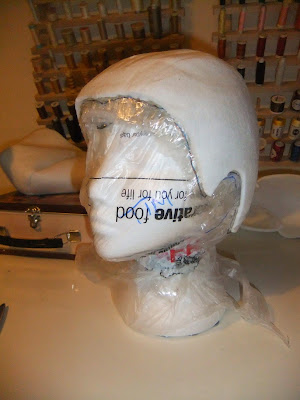I mentioned the making of this earlier in the year, but never got round to posting photos, so here they are.
I made this waistcoat for my boyfriend's birthday in April. It was quite fun to do, and was definitely an exercise in the importance of taking notes. I made my first waistcoat in my second year at university, and so had to take copious notes and progress photos as part of the unit - thank goodness for that! Five years down the line and I would have had no idea where to begin if I hadn't had my notes to guide me, especially for those tricksy welt pockets!
Drafting the pattern was a little disconcerting, as Lars is so long-bodied, and my previous waistcoat had been made for a child, so the completed pattern didn't have much in common with the only other one I had to hand for comparison.
Luckily once made up, it fitted him fine, and he was very happy with it. I've barely scratched the surface of tailoring, and as I've become more focused on historical womanswear it has fallen by the wayside somewhat. Hopefully this will be the first of many more tailoring projects to come; once I've gotten a few more 18th and 19th century dresses out of my system.
I made this waistcoat for my boyfriend's birthday in April. It was quite fun to do, and was definitely an exercise in the importance of taking notes. I made my first waistcoat in my second year at university, and so had to take copious notes and progress photos as part of the unit - thank goodness for that! Five years down the line and I would have had no idea where to begin if I hadn't had my notes to guide me, especially for those tricksy welt pockets!
Drafting the pattern was a little disconcerting, as Lars is so long-bodied, and my previous waistcoat had been made for a child, so the completed pattern didn't have much in common with the only other one I had to hand for comparison.
Luckily once made up, it fitted him fine, and he was very happy with it. I've barely scratched the surface of tailoring, and as I've become more focused on historical womanswear it has fallen by the wayside somewhat. Hopefully this will be the first of many more tailoring projects to come; once I've gotten a few more 18th and 19th century dresses out of my system.



















